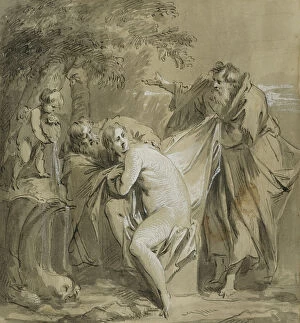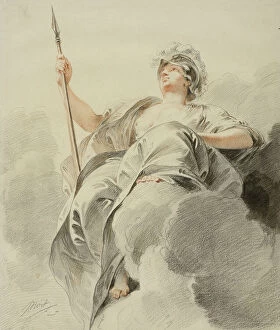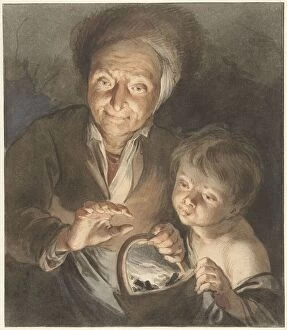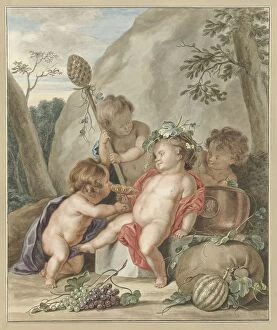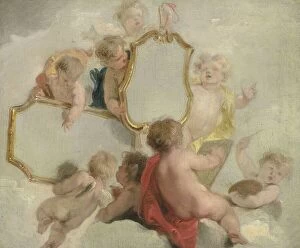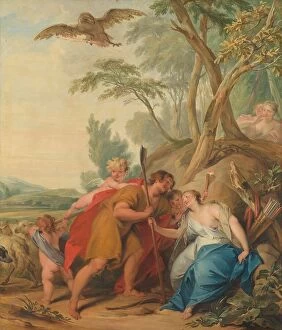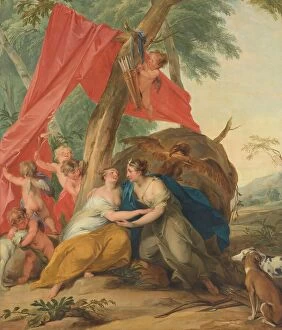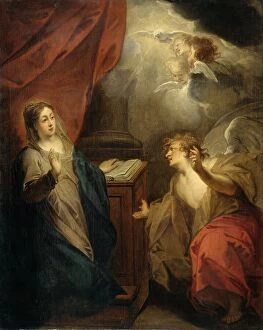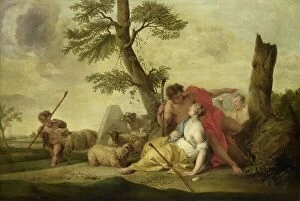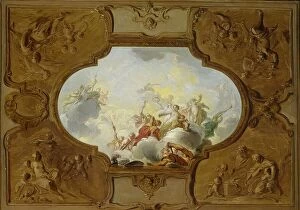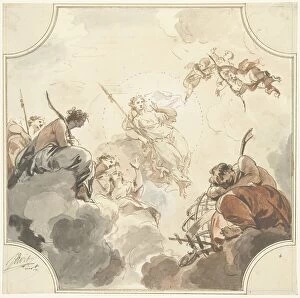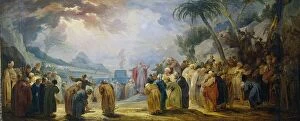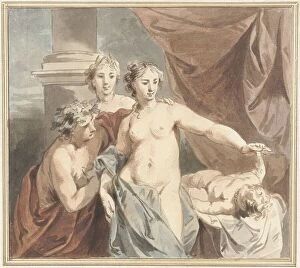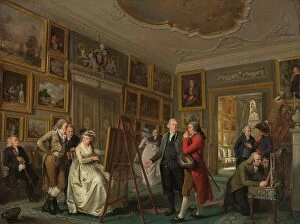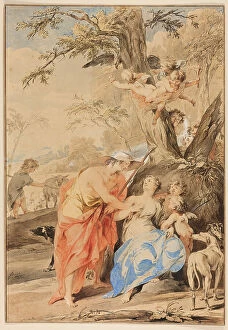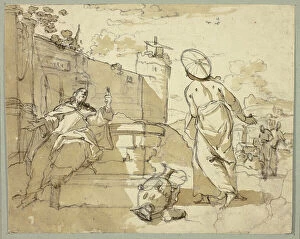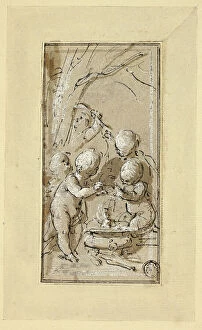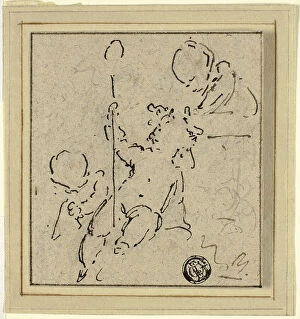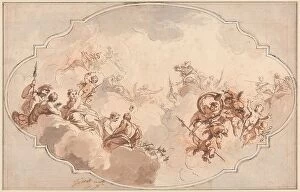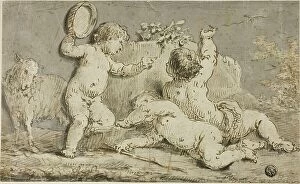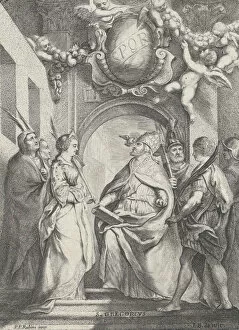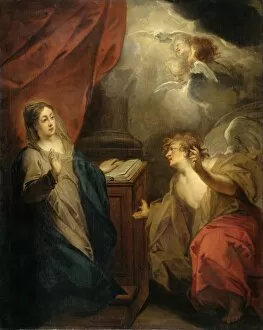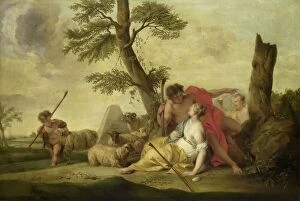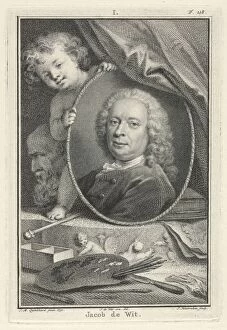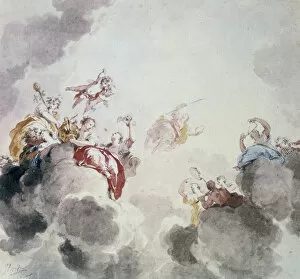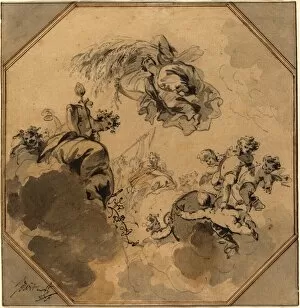Jacob De Wit Collection
Jacob de Wit was a talented Dutch artist who lived from 1695 to 1754
For sale as Licensed Images
Choose your image, Select your licence and Download the media
Jacob de Wit was a talented Dutch artist who lived from 1695 to 1754. He is known for his exquisite paintings and drawings that depict various religious and allegorical scenes. One of his notable works is "Saint Gregory surrounded by other saints, in front of an archway with putti holding. . " created around the years 1711-54. In this painting, De Wit skillfully portrays Saint Gregory alongside other revered saints, set against a backdrop of an ornate archway adorned with cherubic figures. Another remarkable piece by De Wit is "The Annunciation, " executed using black chalk, pen and grey ink, watercolor heightened with white. This artwork beautifully captures the moment when the Virgin Mary receives the news of her divine pregnancy from the angel Gabriel. The delicate lines and subtle use of color showcase De Wit's mastery in capturing emotions and storytelling through his art. In his work titled "Allegory of Government: Wisdom Defeating Discord, " De Wit showcases his ability to convey complex ideas through visual symbolism. This painting depicts wisdom triumphing over discord in matters of governance, emphasizing the importance of wise decision-making for a harmonious society. De Wit's heavenly scene transports viewers into a celestial realm filled with ethereal beauty. Painted during the 18th century, this artwork exhibits De Wit's talent in creating serene landscapes populated by graceful angels. The artist also explored themes from mythology as seen in "A group of angels. " Inspired by an earlier work from the 18th century, De Wit portrays these celestial beings with meticulous attention to detail, showcasing their elegance and purity. Aside from religious subjects and mythological scenes, it also excelled at portraiture as evident in his self-portrait medallion held within an oval frame. This intimate portrayal reveals both the artist's skillful technique and introspective nature. De Wit's versatility extended beyond traditional painting techniques; he also designed elaborate ceiling decorations.

